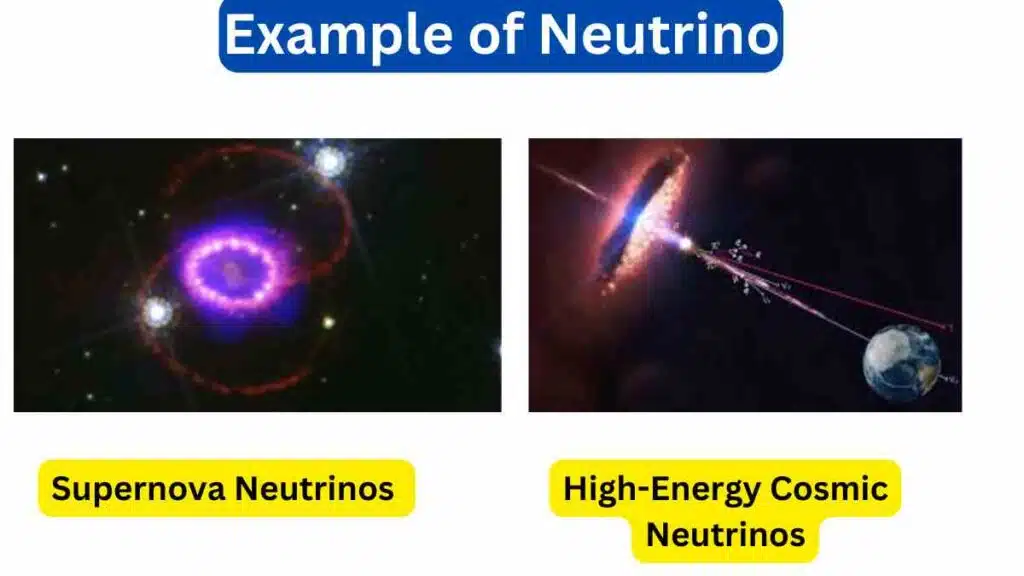10 Example of Neutrino
Neutrinos are subatomic particles that are fundamental constituents of the Standard Model of particle physics. They are electrically neutral, extremely light, and interact very weakly with other matter making them challenging to detect. Examples of neutrinos include Solar neutrinos and supernova neutrinos.
Example of Neutrino
Here are ten examples and aspects related to neutrinos.

1. Three Types of Neutrinos
There are three known types or flavors of neutrinos: electron neutrino (νe), muon neutrino (νμ), and tau neutrino (ντ). Each type is associated with a specific charged lepton (electron, muon, or tau).
2. Neutrino Oscillation
Neutrino oscillation is the phenomenon where neutrinos change from one flavor to another as they travel through space. This discovery, recognized with Nobel Prizes in Physics, showed that neutrinos have mass.
3. Solar Neutrinos
Solar neutrinos are produced in the nuclear fusion reactions that power the Sun. Studying solar neutrinos has provided insights into solar processes and neutrino properties.
4. Supernova Neutrinos
Neutrinos are generated in vast quantities during a supernova explosion. Detecting these neutrinos can provide crucial information about the supernova’s dynamics and help predict these events.
5. Neutrino Detectors
Various detectors have been built to detect neutrinos. Examples include the Super-Kamiokande detector in Japan and the IceCube Neutrino Observatory at the South Pole.
6. Neutrino Mass
While neutrinos were initially thought to be massless, their oscillation behavior implies that they have tiny but nonzero masses, which are still not precisely determined.
7. Neutrinoless Double Beta Decay
Neutrinoless double beta decay is a hypothetical process in which a nucleus decays, emitting two electrons and no neutrinos. Its observation would provide information about the nature of neutrino masses.
8. High-Energy Cosmic Neutrinos
Ultra-high-energy neutrinos from space, known as cosmic neutrinos, are detected by experiments like IceCube. They originate from astrophysical sources, such as supernovae or active galactic nuclei.
9. Neutrino Beams in Particle Accelerators
Particle accelerators produce beams of neutrinos for experiments. For instance, the Fermilab’s MINOS and NOvA experiments study neutrino oscillations using accelerator-generated neutrinos.
10. Neutrinos in Neutron Beta Decay
Neutrinos are involved in neutron beta decay. During this process, a neutron decays into a proton, an electron, and an electron antineutrino (νe̅).







Leave a Reply